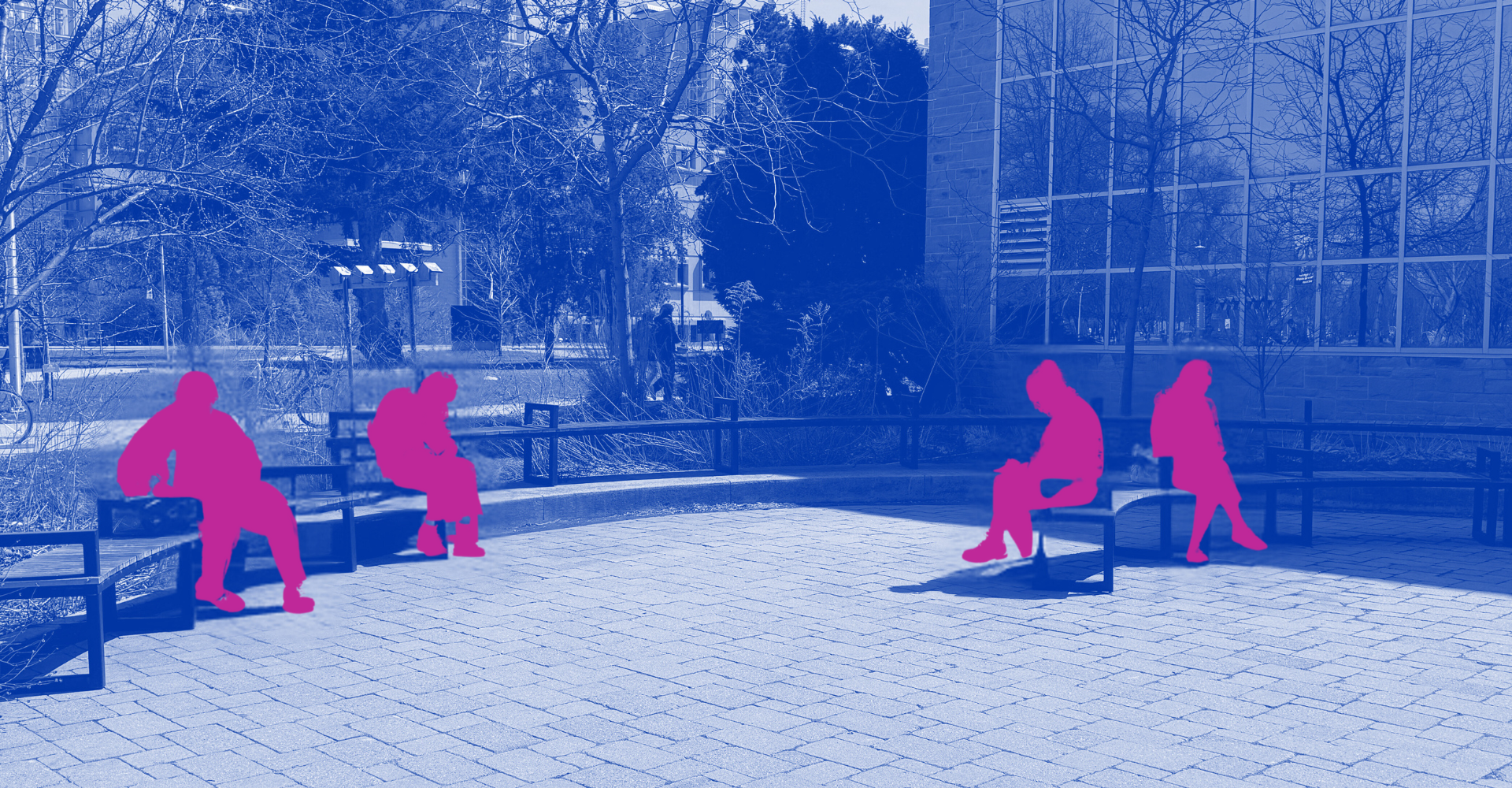Planning a Soundwalk
Reflections and considerations to guide you in planning a soundwalk.

Choosing Sites
When selecting sites, it can be helpful to establish the theme or goal of your soundwalk. This could include exploring the soundscapes of environments in new ways to challenge dominant power structures through a practice of counter-mapping. To plan our soundwalk, we first selected a theme, followed by choosing sites that prompted our participants to explore that theme through critical reflections.
Because this module was developed as part of the SSHRC-funded Digital SIGNAL/Feminist Network project, the focus of the soundwalk aligned with that project’s goal: to mobilize shared resources to counter the ongoing threats posed by technology-facilitated gender-based violence practices circulating between online spaces and university campuses. Our soundwalk aimed to engage participants in practicing deep listening in seemingly mundane spaces on campus. We chose four sites that represent manifestations of these digital threats in physical spaces, highlighting how gendered experiences of technology-mediated violence are deeply embedded in the built (physical) environment. Each site was selected to illustrate different aspects of this phenomenon, encouraging participants to reflect on their surroundings critically and consider how power, surveillance, and exclusion mediate daily campus life.
Planning an Accessible Soundwalk
Be sure to consider the accessibility of your soundwalk, ensuring it is mobility friendly. When planning our campus-based soundwalk, we selected outdoor sites that travelled along accessible paved pathways. We made sure our indoor sites allowed for participants to use ramps or elevators if needed. Finally, during event registration, we invited any participants who required additional accommodations to contact us ahead of the soundwalk to make any adjustments.
Adapting to Seasonal Conditions
Ensure you remind participants to dress appropriately for the weather conditions during your soundwalk. For example, if you are planning a soundwalk in the winter, consider the accessibility of sites due to snowy or icy conditions. For soundwalks in the springtime, reminding participants to bring umbrellas or raincoats can be helpful. In summer months, participants should bring water bottles, sunscreen and hats. It may also be helpful to reflect on when you are hosting your soundwalk and if the season is relevant the soundscapes you hope to explore.
Facilitation
Facilitators can foster an environment of reflection, encouraging participation through guidance and support. During our soundwalk, facilitators played an important role in keeping time, guiding participants to each site, and leading discussions. Facilitators posed questions at each site that participants reflected on in their field notes. They also lead smaller breakout groups during the discussion portion of our workshop.
Fostering Participant Engagement
Incorporate activities that prompt participants to reflect on and share their unique experiences of soundwalking, whether this was their first soundwalk or if they were experienced soundwalkers. We designed our questions to scaffold throughout the soundwalk, beginning with initial thoughts and reflections and extending to more critical, internal observations about the absence of sounds, expected sounds, belonging, and out-of-placeness.